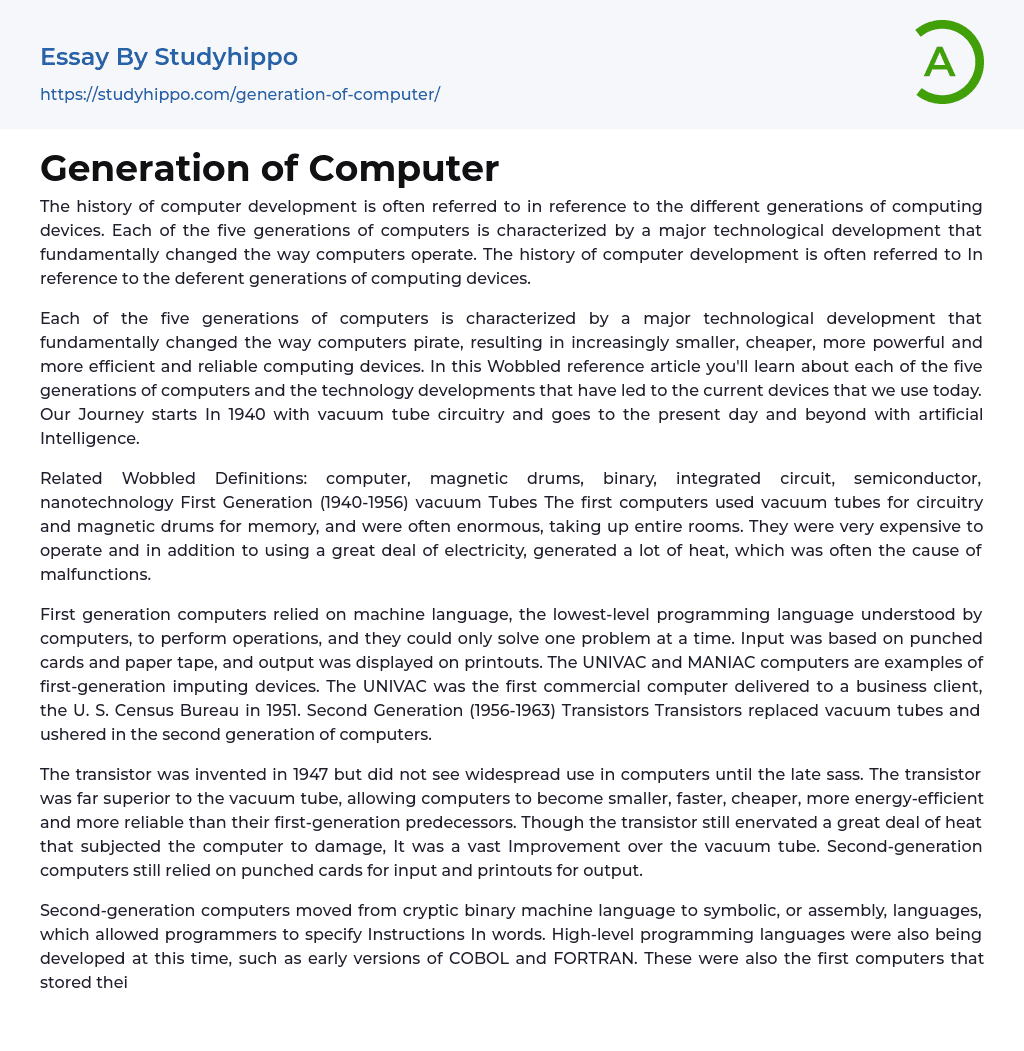This article delves into the history of computer development, dividing it into different generations characterized by significant technological advancements that transformed how computers operate. It all began in 1940 when vacuum tube circuitry and magnetic drums were utilized for memory in the first-generation computers. These massive machines occupied entire rooms and incurred high costs while producing excessive heat that led to malfunctions. Their capabilities were limited to addressing one problem at a time, relying on punched cards and paper tape for input/output.
Among the pioneers of this generation were the UNIVAC and MANIAC, with UNIVAC becoming the first commercial computer deployed by a business client after being delivered to the U.S. Census Bureau in 1951. The second generation (1956-1963) witnessed a breakthrough with transistors replacing vacuum tubes. Transistors revolutionized computers due to their smaller size, faster speed, lower cost, improved energy efficienc
...y, and enhanced reliability compared to their predecessors.
Although transistors still generated considerable heat posing potential harm to computers, they presented a significant upgrade from vacuum tubes. Punched cards remained prominent for input/output during this period as well as a shift from binary machine language towards symbolic or assembly languages.These new languages revolutionized programming by allowing programmers to use words instead of complex binary code. High-level programming languages like early versions of COBOL and FORTRAN were also developed during this time. In terms of memory storage, the computers in this generation utilized magnetic core technology rather than magnetic drum technology, making them ideal for use in the atomic energy industry.
The third generation of computers (1964-1971) brought about a significant advancement with the introduction of integrated circuits. This innovation greatly improved computer speed and efficiency. Additionally, users
now had keyboards and monitors to interact with their machines, thanks to an operating system that supported multiple simultaneous applications. A central program was implemented to monitor memory usage during this period.
As computer technology continued to advance, it became more accessible and affordable for a wider audience due to smaller sizes and lower costs. This progress marked the beginning of the fourth generation of computers (1971-Present). The integration of thousands of circuits onto a single silicon chip played a crucial role in reducing machine sizes from room-filling behemoths to pocket-sized devices.
In 1971, Intel introduced its groundbreaking 4004 chip which consolidated all computer components - including the central processing unit, memory, and input/output controls - into one chip. IBM followed suit by introducing its first home computer in 1981, while Apple's Macintosh made its debut in 1984. These developments further accelerated as microprocessors grew more powerful and started being incorporated into everyday products.The Internet was created by connecting small computers, which eventually led to the fourth generation of computing. This generation introduced innovative devices like mice and handheld gadgets. Currently, artificial intelligence development is being explored in fifth-generation computing. Some applications like voice recognition have already been implemented. Revolutionary advancements such as parallel processing, superconductors, quantum computation, molecular technology, and nanotechnology will further transform computers. The ultimate goal of fifth-generation computing is to enable devices with natural language understanding and self-learning abilities.
- Computer File essays
- Desktop Computer essays
- Servers essays
- Programming Languages essays
- Object-Oriented Programming essays
- Java essays
- Teenagers essays
- Millennials essays
- Teenage Drinking essays
- Teenage Suicide essays
- Camera essays
- Cell Phones essays
- Computer essays
- Ipod essays
- Smartphone essays
- Android essays
- Application Software essays
- Benchmark essays
- Computer Network essays
- Computer Programming essays
- Computer Security essays
- Computer Software essays
- Cryptography essays
- Data collection essays
- Data Mining essays
- Graphic Design essays
- Information Systems essays
- Internet essays
- Network Security essays
- Website essays
- World Wide Web essays
- Anthropology essays
- Audience essays
- Charity essays
- Cultural Competence essays
- Emile Durkheim essays
- Gender Roles essays
- Generation essays
- Globalization essays
- Interpersonal Relationship essays
- People essays
- Race essays
- Social Change essays
- Social Class essays
- Social Movement essays
- Social Science essays
- Social Status essays
- Social Stratification essays
- Society essays
- Sociological Imagination essays




